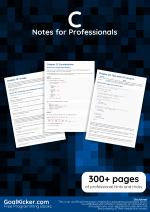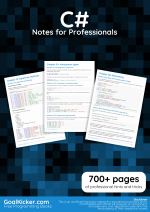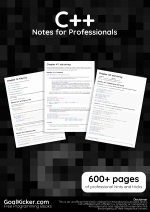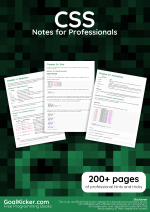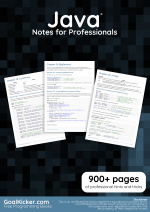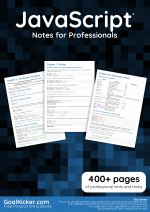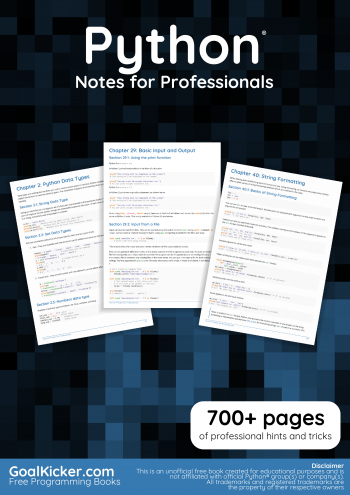
Python® Notes for Professionals book
If you found this free Python® book useful,
then please share it ❤😊
Chapters
- Getting started with Python Language
- Python Data Types
- Indentation
- Comments and Documentation
- Date and Time
- Date Formatting
- Enum
- Set
- Simple Mathematical Operators
- Bitwise Operators
- Boolean Operators
- Operator Precedence
- Variable Scope and Binding
- Conditionals
- Comparisons
- Loops
- Arrays
- Multidimensional arrays
- Dictionary
- List
- List comprehensions
- List slicing (selecting parts of lists)
- groupby()
- Linked lists
- Linked List Node
- Filter
- Heapq
- Tuple
- Basic Input and Output
- Files & Folders I/O
- os.path
- Iterables and Iterators
- Functions
- Defining functions with list arguments
- Functional Programming in Python
- Partial functions
- Decorators
- Classes
- Metaclasses
- String Formatting
- String Methods
- Using loops within functions
- Importing modules
- Difference between Module and Package
- Math Module
- Complex math
- Collections module
- Operator module
- JSON Module
- Sqlite3 Module
- The os Module
- The locale Module
- Itertools Module
- Asyncio Module
- Random module
- Functools Module
- The dis module
- The base64 Module
- Queue Module
- Deque Module
- Webbrowser Module
- tkinter
- pyautogui module
- Indexing and Slicing
- Plotting with Matplotlib
- graph-tool
- Generators
- Reduce
- Map Function
- Exponentiation
- Searching
- Sorting, Minimum and Maximum
- Counting
- The Print Function
- Regular Expressions (Regex)
- Copying data
- Context Managers (“with” Statement)
- The __name__ special variable
- Checking Path Existence and Permissions
- Creating Python packages
- Usage of "pip" module: PyPI Package Manager
- pip: PyPI Package Manager
- Parsing Command Line arguments
- Subprocess Library
- setup.py
- Recursion
- Type Hints
- Exceptions
- Raise Custom Errors / Exceptions
- Commonwealth Exceptions
- urllib
- Web scraping with Python
- HTML Parsing
- Manipulating XML
- Python Requests Post
- Distribution
- Property Objects
- Overloading
- Polymorphism
- Method Overriding
- User-Defined Methods
- String representations of class instances: __str__ and __repr__ methods
- Debugging
- Reading and Writing CSV
- Writing to CSV from String or List
- Dynamic code execution with `exec` and `eval`
- PyInstaller - Distributing Python Code
- Data Visualization with Python
- The Interpreter (Command Line Console)
- *args and **kwargs
- Garbage Collection
- Pickle data serialisation
- Binary Data
- Idioms
- Data Serialization
- Multiprocessing
- Multithreading
- Processes and Threads
- Python concurrency
- Parallel computation
- Sockets
- Websockets
- Sockets And Message Encryption/Decryption Between Client and Server
- Python Networking
- Python HTTP Server
- Flask
- Introduction to RabbitMQ using AMQPStorm
- Descriptor
- tempfile NamedTemporaryFile
- Input, Subset and Output External Data Files using Pandas
- Unzipping Files
- Working with ZIP archives
- Getting start with GZip
- Stack
- Working around the Global Interpreter Lock (GIL)
- Deployment
- Logging
- Web Server Gateway Interface (WSGI)
- Python Server Sent Events
- Alternatives to switch statement from other languages
- List destructuring (aka packing and unpacking)
- Accessing Python source code and bytecode
- Mixins
- Attribute Access
- ArcPy
- Abstract Base Classes (abc)
- Plugin and Extension Classes
- Immutable datatypes(int, float, str, tuple and frozensets)
- Incompatibilities moving from Python 2 to Python 3
- 2to3 tool
- Non-official Python implementations
- Abstract syntax tree
- Unicode and bytes
- Python Serial Communication (pyserial)
- Neo4j and Cypher using Py2Neo
- Basic Curses with Python
- Templates in python
- Pillow
- The pass statement
- CLI subcommands with precise help output
- Database Access
- Connecting Python to SQL Server
- PostgreSQL
- Python and Excel
- Turtle Graphics
- Python Persistence
- Design Patterns
- hashlib
- Creating a Windows service using Python
- Mutable vs Immutable (and Hashable) in Python
- configparser
- Optical Character Recognition
- Virtual environments
- Python Virtual Environment - virtualenv
- Virtual environment with virtualenvwrapper
- Create virtual environment with virtualenvwrapper in windows
- sys
- ChemPy - python package
- pygame
- Pyglet
- Audio
- pyaudio
- shelve
- IoT Programming with Python and Raspberry PI
- kivy - Cross-platform Python Framework for NUI Development
- Pandas Transform: Preform operations on groups and concatenate the results
- Similarities in syntax, Differences in meaning: Python vs. JavaScript
- Call Python from C#
- ctypes
- Writing extensions
- Python Lex-Yacc
- Unit Testing
- py.test
- Profiling
- Python speed of program
- Performance optimization
- Security and Cryptography
- Secure Shell Connection in Python
- Python Anti-Patterns
- Common Pitfalls
- Hidden Features
Example book pages
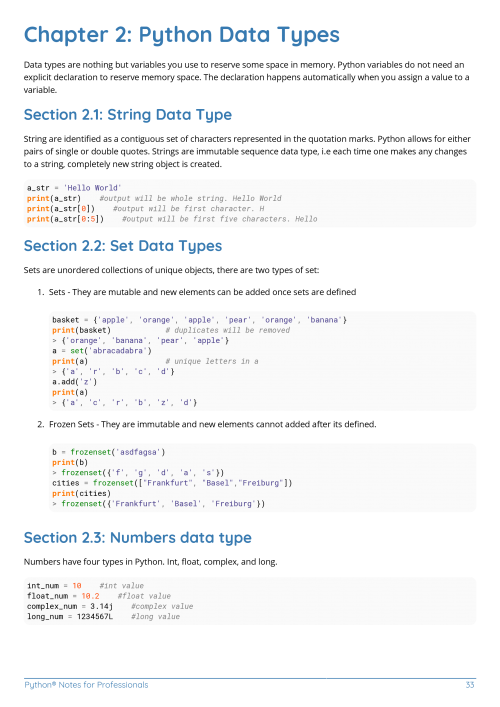
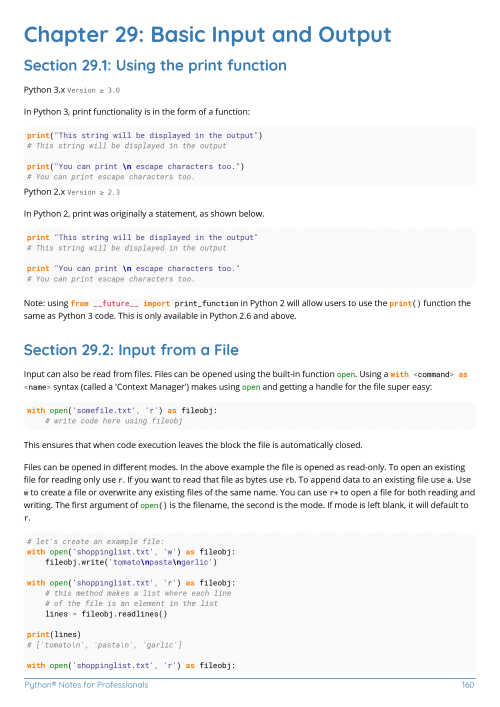
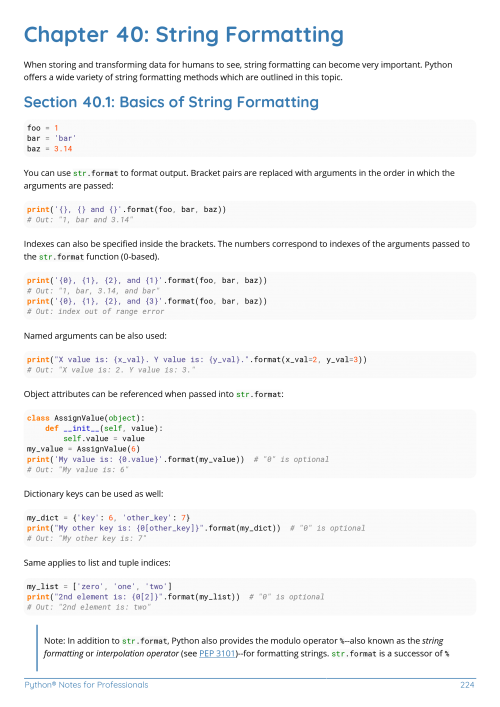
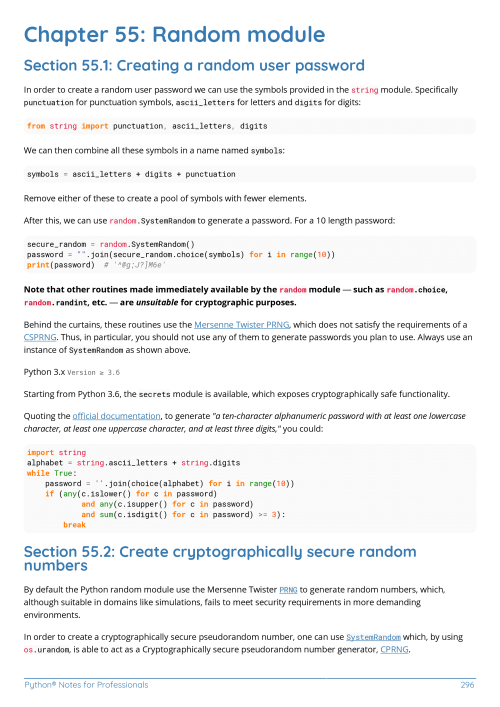
What people are saying about this Python® Notes for Professionals book
You're awesome! This is one of the most complete guides for Python I have ever seen.
Woah, this is free? I would have paid for this. Thanks OP. Maybe add a donation link to the page? I'd throw a small donation your way.
Thanks a lot!! It was really helpful!!
I absolutely love this. Thanks
This is an excellent resource - thanks!
This is not your usual programming book. I have checked the contents of C and Python book, and I can say these are quality books.
The Python® Notes for Professionals book is compiled from Stack Overflow Documentation, the content is written by the beautiful people at Stack Overflow. Text content is released under Creative Commons BY-SA. See credits at the end of this book whom contributed to the various chapters. Images may be copyright of their respective owners unless otherwise specified
Book created for educational purposes and is not affiliated with Python® group(s), company(s) nor Stack Overflow. All trademarks belong to their respective company owners
816 pages, published on June 2018
To support continued development and improvements to this book, please consider a small bitcoin donation: 1H63m55bw6KDYUaKU1mYLGrzDf4wcrVzhX

